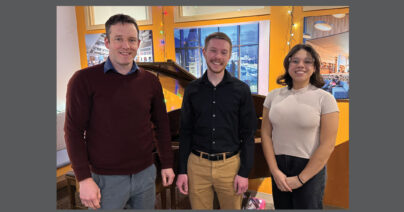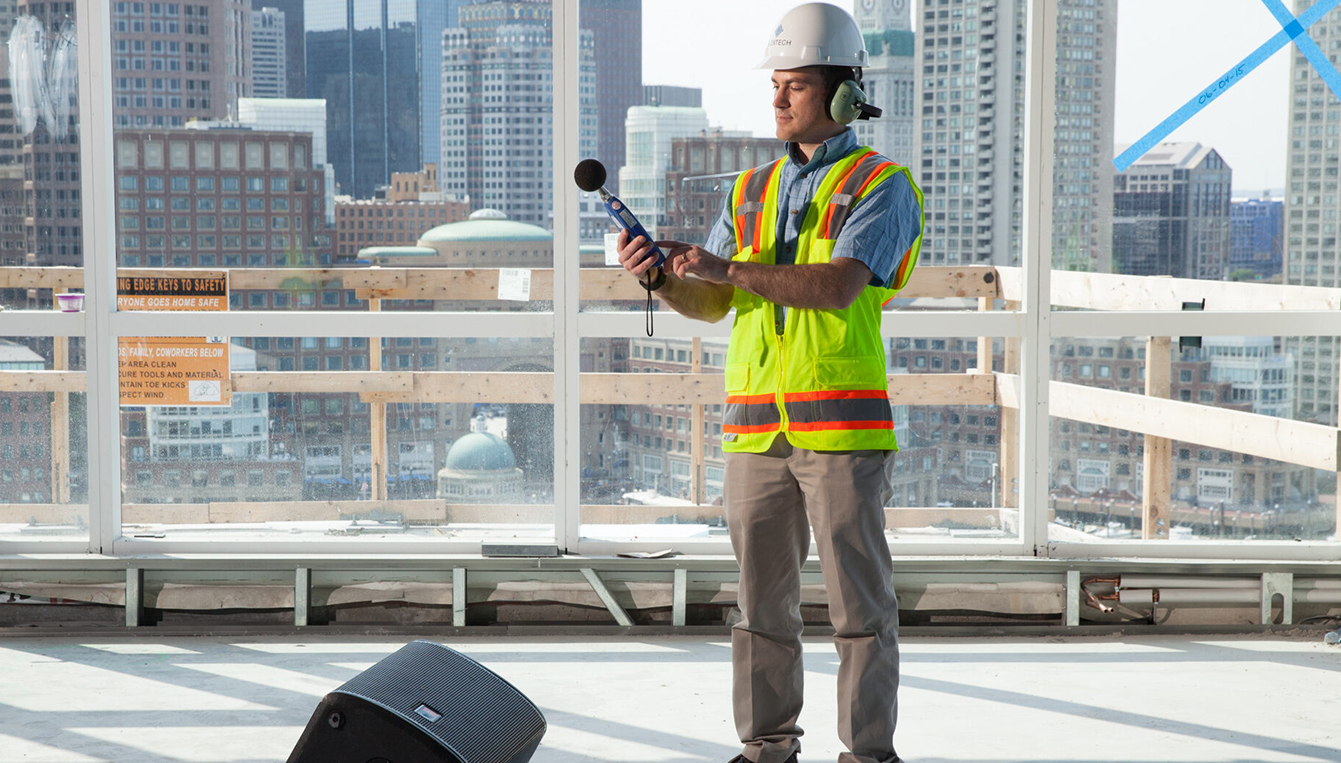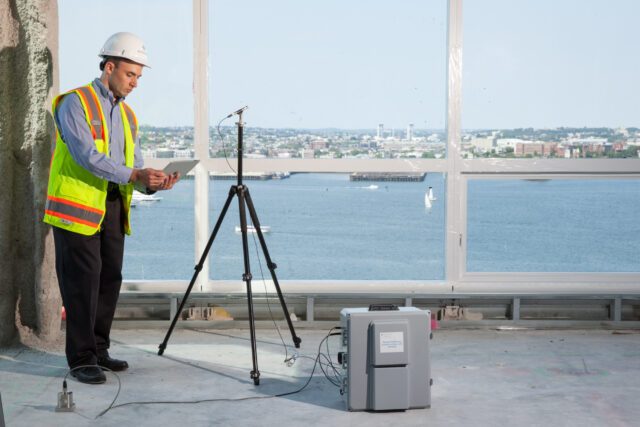 News
News
Acentech welcomes three new hires!
David Gerard joined our Cambridge office as a Senior Consultant in our Noise & Vibration group. Prior to his move to Boston, David consulted in the…

The broad range of consulting services we provide requires an equally broad range of test and measurement equipment. Our Architectural Acoustics Group has available sound level meters, tapping machines, powered loud speakers, dodecahedron speakers, an acoustic flashlight and an Audio Spotlight. Access to both a small and large impedance tube allows us to compare sound absorption of different materials. We also have a Residential Sound Insulation Kit to measure the sound attenuation performance of homes near airports.
Our Noise and Vibration Group has access to microphones, accelerometers (seismic to 0.2 gm), and environmental meters. A variety of microphones enable us to measure infrasound, audible noise, and ultrasound to 80,000 Hz. Noise and vibration can be analyzed in real time using SLMs or recorded, from DC to 20,000 Hz. Instrumented hammers, both small and large, provide direct impedance measurements both on a building scale and a small product scale. We compliment our building noise and vibration studies by including low frequency EMI (DC to 400 Hz). Weather stations and cell modems enhance the capability of our outdoor meters and hydrophones extend our capability to underwater measurements.
The Product Sound Group can probe the acoustics and vibration characteristics of products and appliances using accelerometers and microphones as well as with a laser vibrometer, sound intensity probe, and tiny Knowles microphones which can be used inside the product enclosure (to measure transmission loss, for example). Diagnosing product noise often requires a thorough knowledge of the inner working of the device. We have the capability to measure flow, pressure (both static and dynamic), force, strain, torque, rotational speed, current, voltage, electrical power, and temperature. We can apply a brake to load a motor or shake a product with external vibration.We also have a small machine shop that helps us fabricate fixtures and other devices needed for testing. We conduct a number of our studies inside our 66 m3 reverberation room which provides an ideal environment to measure sound power.

Over the last 8 years we have developed a state-of-the-art remote monitoring system, unlike any other available. Our four channel system can measure vibration and noise (infrasound through ultrasound), indoors or in harsh environments. Communication is through cell modems, wireless internet or Ethernet. The software is customizable to each individual project, and a private website can be provided for real time access to the data. Our remote monitoring systems now number about 60 units and they have been used for wind turbines, labs and operating rooms with sensitive equipment, museums, vivarium, and nanofabrication facilities. Equally important, our large number of units allows us to bring a tremendous amount of instrumentation to bear on a project. This can have real implications on the cost of a test program, allowing us to collect all of the necessary data in “one shot”, eliminating the need for multiple test days, with multiple instrumentation set-ups and tear-downs.
Our Systems Group maintains equipment as well for testing the various systems both new systems that have been designed, as well as confirming the operation of existing systems. The AV team has various platforms for testing both audio and video systems. Video capabilities include a tri-color stimulus analyzer, which is used for measuring color gamut and conformance with the Rec. 709 Color Space standard for HDTV. Additionally they have a test signal generator that is used for measuring contrast ratios, resolution and timing, convergence, as well as digital video parameters such as Extended Display Identification Data, more commonly known as EDID, and HDCP copy protection compliance.
On the audio side of things, they have a STIPA audio measurement system which is used for verifying intelligibility of amplified audio within a space. They have additional platforms that are used for confirming other design parameters, like uniformity of coverage, level consistency, and frequency response. There are software based simulation platforms as well that are used for creating 3D computer models of spaces for predictive modeling of how audio will behave in a given space. These audio and video tools are paramount for ensuring that the design goals have been met, that the systems are correctly calibrated, and that they’re consistent throughout a project from room to room.
The Telecommunications team has a similar suite of tools at their disposal. Like the audio simulation software, they have a Wi-Fi mapping application that is used for predicative modeling of bandwidth and coverage area. They also have a Wi-Fi measurement platform, used for commissioning a design, finding a weak signal, or detecting a rouge antenna. For wiring verification, they use an Ethernet cable tester, which connects at both ends of the terminated cable to verify continuity and proper pin configuration.